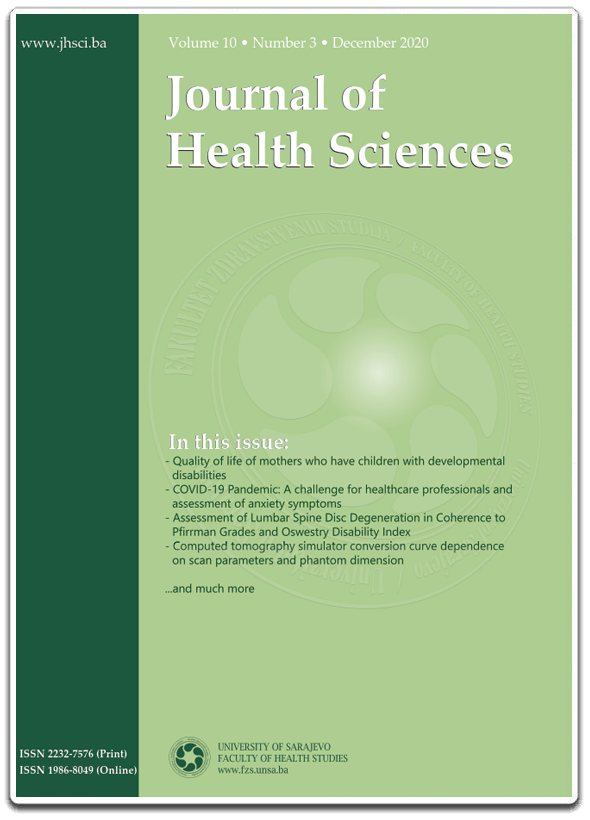Sensory integration of the proprioceptive sensory system of children with intellectual disabilities
DOI:
https://doi.org/10.17532/jhsci.2025.2828Keywords:
sensory integration, proprioception, developmental disabilities, intellectual disabilitiesAbstract
Introduction: Sensory integration is the way in which the nervous system processes information from the senses. Irregularities or disturbances in brain function that make it difficult to integrate sensory input from stimuli lead to sensory disintegration. The proprioceptive sensory system provides information about joint and body movements, extent, strength, duration and direction of movement, position of the body or body parts in space, and muscle tone. The aim of this study is to investigate the prevalence of sensory integration disorders of the proprioceptive sensory system in children with intellectual disabilities and children without developmental disabilities and to determine whether the existing difference is statistically significant.
Methods: The study was conducted on a sample of 60 respondents. The first subsample of respondents (n = 30) consisted of children with intellectual disabilities. The second subsample of respondents (n = 30) consisted of children without developmental disabilities of the same chronological age. The measuring instrument “Questionnaire for examining proprioceptive sensory sensitivity” was used. Data were collected by observing the respondents and interviewing the rehabilitator and the child’s parents. The frequencies and percentages of the respondents’ answers for all variables were calculated. To determine the statistical significance of differences, the Mann-Whitney U test and Wilcoxon W test were used at a statistical significance level of p < 0.05.
Results: The results show that 81.4% of children with intellectual disabilities have difficulties with sensory integration of the sensations of the proprioceptive sensory system, manifested as hypersensitivity (37.6%), hyposensitivity (19.5%), and mixed sensory response (24.3%). Sensory integration difficulties are also experienced by 75.7% of children without developmental disabilities, manifested by hypersensitivity (17.62%), hyposensitivity (27.6%), and mixed sensory reactions (30.5%). There is a statistically significant difference in the variables: high-risk games, fine motor tasks, and activities requiring physical strength. For the other variables, the difference in sensory integration is not statistically significant.
Conclusion: 81.4% of children with intellectual disabilities and 75.7% of children without developmental disabilities have difficulties in sensory integration of the proprioceptive sensory system. Children with intellectual disabilities show better integration of proprioceptive sensory input in activities requiring physical strength and in activities with eyes closed or covered. In all other activities, they show poorer sensory integration of proprioceptive sensations than children without developmental disabilities.
Downloads

Downloads
Published
License
Copyright (c) 2025 Naim Salkić, Ana Budimir, Namik Trtak, Daniel Maleč, Eldad Kaljić, Safet Velić

This work is licensed under a Creative Commons Attribution 4.0 International License.










